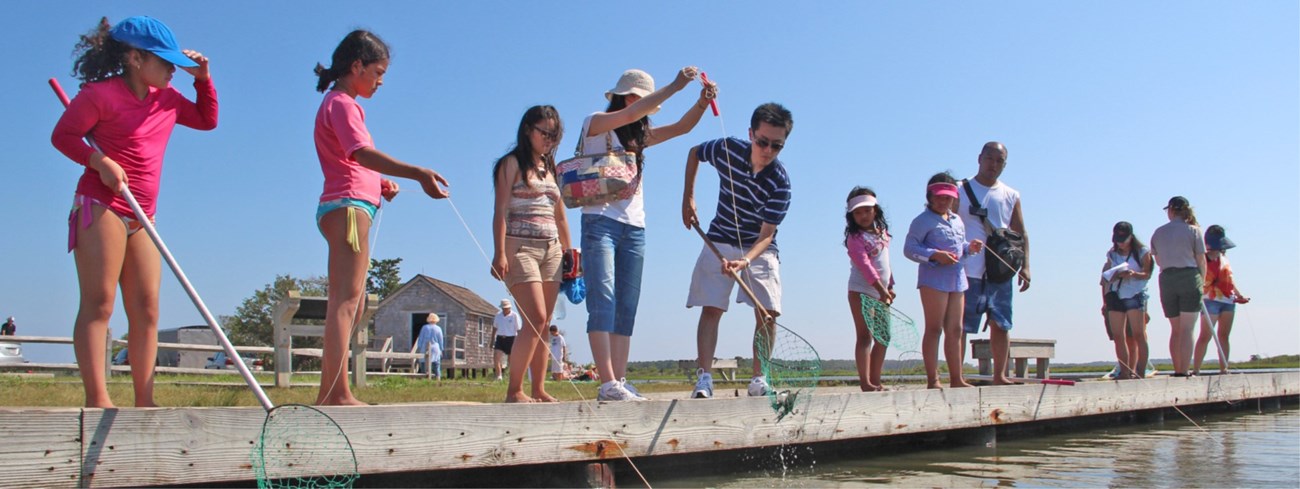
NPS Photo Callinectes sapidus (The Blue Crab)The literal translation of this Latin name is the beautiful (calli) swimmer (nectes) that is savory (sapidus). Named for the color of its claws and not its temperament, the blue crab is one of Assateague’s best known and most sought after creatures. As predator and prey this crustacean is a keystone species, vital for sustaining the health of Assateague’s coastal bays.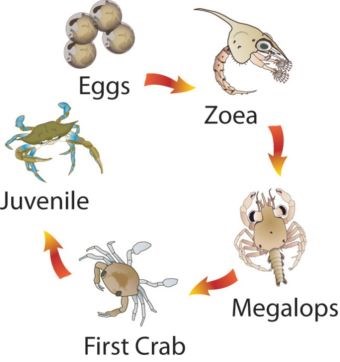
Growing UpBlue crabs begin life as eggs carried beneath the “apron” or abdomen of their mothers. Mature female crabs can carry up to two million orange eggs beneath their apron. After hatching into tiny larvae they live in the plankton community for one to two months. Most become food for fish, shellfish and other plankton feeders.Those that survive to become juveniles depend on submerged aquatic vegetation (SAV) areas as important nursery habitats. These underwater grass beds provide hiding places from predators and offer an abundance of food. Young crabs grow rapidly by repeatedly molting their shells, often reaching adult size (between 5” and 7”) within a year. After maturing, they usually survive from one to three years. Crabs only spawn in salt water, yet young crabs thrive and grow to their largest size in brackish water. Females prefer saltier waters than males. Equipped with powerful claws and the ability to swim, blue crabs are skilled predators and scavengers. They are omnivores, feeding on clams, oysters, worms, small crustaceans, dead plants and animals, and each other. In spite of their defenses, adults are food for fish, birds, turtles, humans and other mammals. 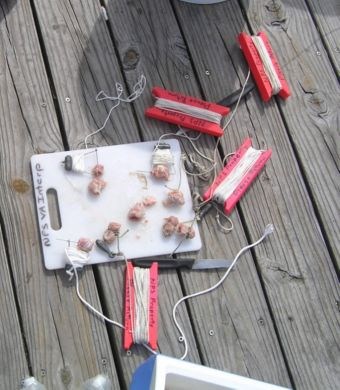
NPS Photo Know before you goCrabs can pinch! It’s their best defense. To avoid getting pinched, pick the crab up at the base of one of its back swimming legs where it connects to its body. In the event that you get pinched, place the crab in water so that it will let go.When is the best time to go crabbing? Crabbing can be done anytime, but the best time is when the tide is moving. What equipment do I need? - a hand line or string with a weight and/or a crabpot or trap - bait (chicken necks, bait fish) - net with long handle - ruler to measure the crabs - cooler with lid and ice How do I catch the crabs? When it comes to bait, the best options are types that can stay on your line like chicken necks or bait fish. Tie the bait onto the line, and hold the line with one hand and drop it into water until bait hits the bottom. When you feel a crab tugging on your line, slowly pull the line with the crab until it is just below the surface. Use a net to scoop up thecrab before it lets go of the bait. Place crab in a cooler with ice if it is a “keeper” (see regulations). Crabs will not survive in a bucket or cooler of water. Take only what you will eat. If you are not keeping it, return it to the water immediately. Wash your hands after handling bait. Never cook dead crabs, throw them out. Bacteria accumulate quickly in dead crabs. RegulationsRegulations change frequently. Recreational crabbing on Assateague does not require a license.In Maryland, The season is open from April 1 - December 31. June through September are the best months. Hand lines and collapsible traps are permitted. (In Maryland, only waterfront property owners and commercial crabbers may use crab pots.) Crabbing equipment must be attended at all times. All lines and collapsible traps must be removed after crabbing. Please check at the Assateague Island Visitor Center or with the Maryland Department of Natural Resources (877-620-8DNR) for the latest regulations. In Virginia, the season is open from mid-March through November. June through September are the best months. Hand lines and two collapsible traps or crab pots per person are permitted. Crabbing equipment (crab pots, hand lines) must be attended at all times. Please check at the Herbert H. Bateman Educational and Administrative Center or with the Virginia Marine Resources Commission (757-247-2200) for the latest regulations. 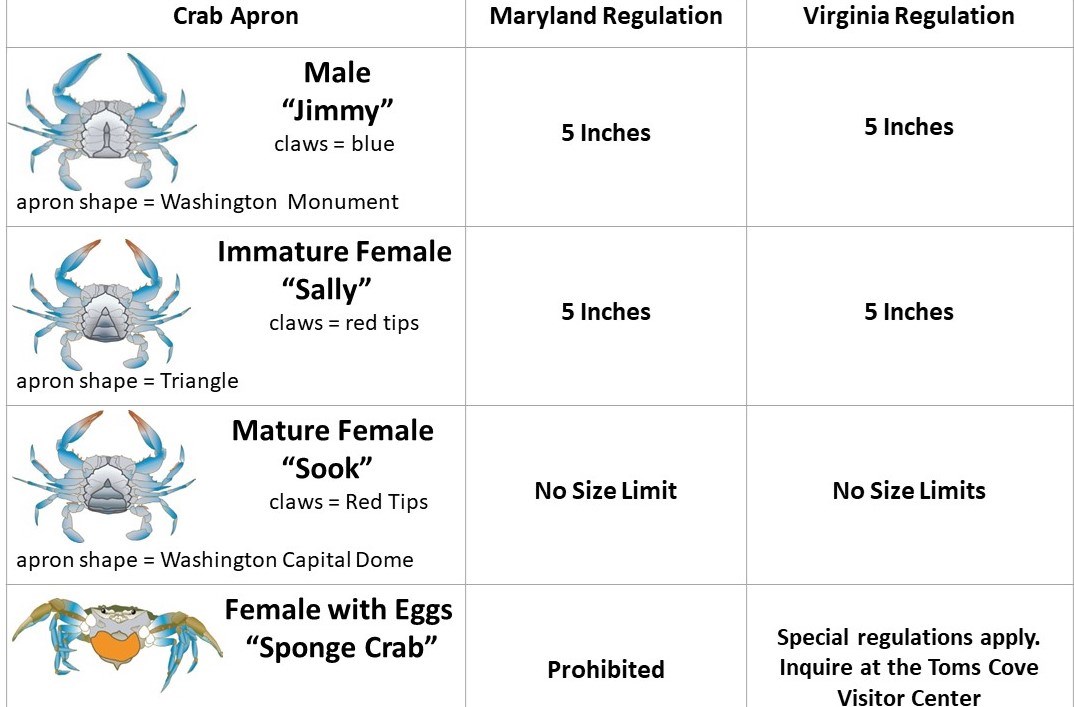
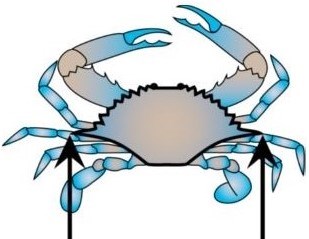
Integration and Application Network (ian.umces.edu/symbols/) How to measure a crabCrabs are measured from point to point across the widest part of their shell. Crab measuring stations may be available at some crabbing spots on the island, however carrying your own ruler is encouraged if you plan to keep any crabs you catch.
For more information on rules, regulations and crabbing techniques, please stop by one of the visitor centers.
|
Last updated: November 16, 2025
